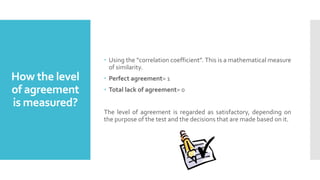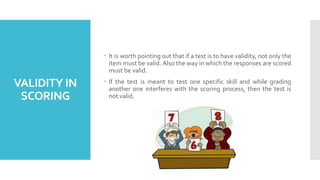This document discusses different types of validity in testing:
1. Content validity refers to how well a test measures the specific construct it aims to assess. A test needs to be related to the relevant class content.
2. Criterion-related validity is the degree of agreement between a test and an independent, reliable standard. There are two types: concurrent and predictive validity.
3. Construct validity provides evidence that test items measure the intended underlying abilities. Think-aloud and retrospection methods can provide evidence of construct validity.
Validity in scoring and face validity are also discussed. To improve validity, test specifications and a representative sample of content should be used, and scoring should directly relate to what
















